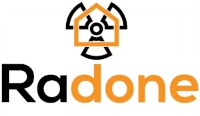What is Radon?
Radon is a cancer-causing radioactive gas. You can’t see, smell or taste radon. But it may be a problem in your home. Radon is estimated to cause thousands of deaths each year. That’s because when you breathe air containing radon, you can get lung cancer. In fact, the Surgeon General has warned that radon is the second leading cause of lung cancer in the United States today. Only smoking causes more lung cancer deaths. If you smoke and your home has high radon levels, your risk of lung cancer is especially high. The Minnesota Department of Health has created this guide to explain the health risks of radon and why it is important for every home in Minnesota to be tested.
Where does Radon come from?
Radon comes from the natural (radioactive) breakdown of uranium in soil and gets into the air you breathe. Radon can be found all over the U.S. It seeps into any type of building (homes, offices, and schools), which result in a high indoor radon level. Where do you and your family get the most exposure? You and your family are most likely to get your greatest exposure at home, where you spend most of your time.
How does radon get into my home?
It typically moves up through the ground to the air above and into your home through cracks and other holes in the foundation. The pressure difference in your home pulls radon in. Your home traps radon inside, where it can build up. The highest concentration will be in the lowest level of your home. The radon will slowly diffuse throughout your entire house as it is pulled by air currents and ventilation systems. Any home may have a radon problem. This means new and old homes, well- sealed and drafty homes, and homes with or without basements.
How does radon damage my lungs?
Radon decays quickly, giving off tiny radioactive particles. When inhaled, these radioactive particles give off bursts of energy that can damage the cells that line the lung. Long-term exposure to radon can lead to lung cancer, the only cancer proven to be associated with inhaling radon.
Are newly constructed homes built with radon reduction techniques?
Yes, New homes can be built with radon-resistant features. Radon-resistant construction techniques can be effective in preventing radon entry. When installed properly and completely. Except construction companies cut corners. Legally they only need to install a passive system (which is basically like having a vacuum without the motor powering it) not very useful to say the least. In most cases they don’t use licensed radon professionals to install these systems. Every new home should be tested after occupancy, even if it was built radon- resistant.
My house is in a low radon zone according to the EPA so I’m fine right?
No, being in a low radon zone doesn’t mean that you are safe. You should still have your home tested. Radon levels can vary drastically even from neighbor to neighbor so don’t assume your house is safe just because a neighbor’s house tested low. There is no safe level of radon so any radon is bad radon.
The legal standard for radon to sell or buy a house is safe correct?
No, the Minnesota Department of Health states that radon levels should be under 4.0 pCi/L of radon to sell your home. This does not mean that it is a safe level. It is recommended that you have at least 2.0 pCi/L or less in your home to reduce the risk of lung cancer to you and your family. Less is always better when it comes to radon.
How serious is radon in Minnesota?
High amounts of radon can be found in every state in the US. Yet in Minnesota 2 out of 5 homes have radon levels that pose a significant health risk. Nearly every county in Minnesota is in a high or extreme radon zone. This is because of the geology of Minnesota as well as how our homes are built to withstand the Minnesotan winters.


